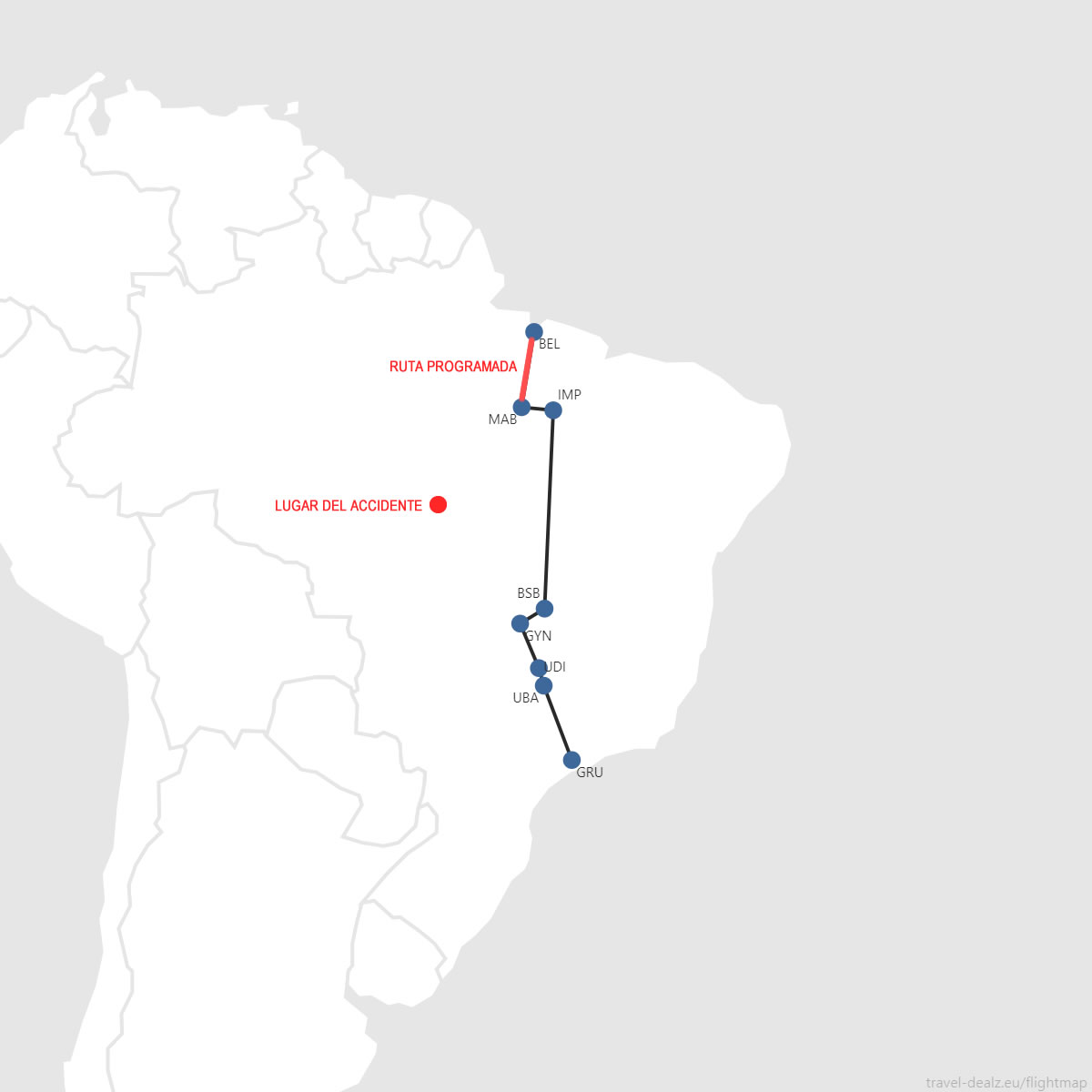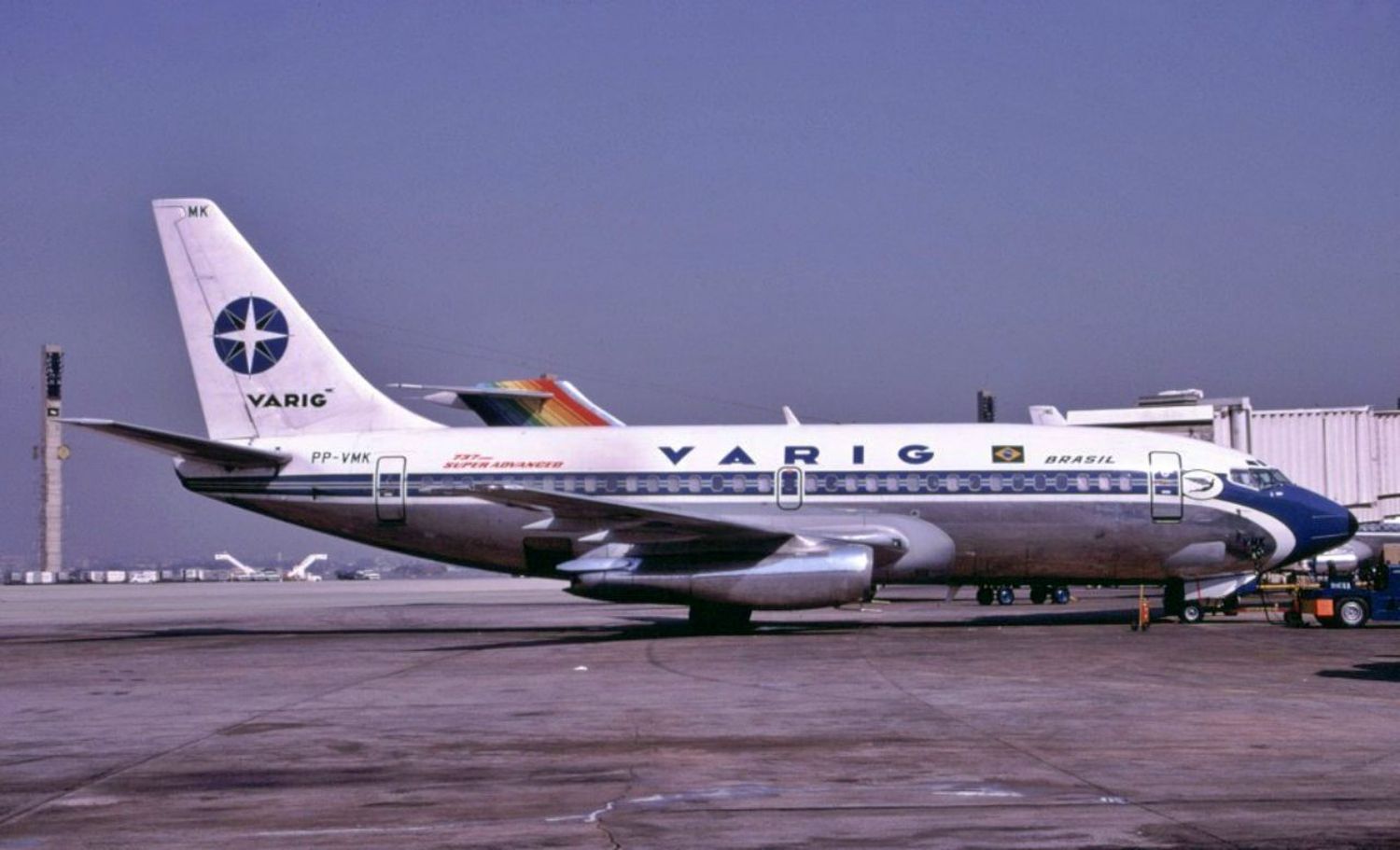35 Years On: How a Navigation Mistake Sent VARIG Flight 254 Into the Amazon
On September 3, 1989, VARIG Flight 254, operated by a Boeing 737-241 registration PP-VMK, became one of the most tragic and talked-about episodes in Brazilian aviation. That day, what began as a routine passenger flight between the cities of Marabá and Belém, in the state of Pará, Brazil, ended in disaster due to a navigation error that caused the aircraft to become lost in the vast and dense Amazon rainforest. This incident is remembered not only for the lives that were lost but also for the human decisions and technical failures that made it possible.
The Flight 254 Itinerary
VARIG Flight 254 was part of a longer route that began in São Paulo (GRU) and ended in Belém (BEL), with several intermediate stops. On September 3, 1989, the plane took off from Marabá at 17:35 local time, bound for Belém. On board were 48 passengers and 6 crew members. The flight captain was César Augusto Padula Garcez, a pilot with over 15 years of experience at VARIG and more than 6,000 flight hours to his credit. The first officer was Guilherme Cesar do Carmo, who had considerable experience but less than that of the captain.
The Navigation Error
The tragedy of Flight 254 began with an apparently simple but catastrophic navigation error. Before departing from Marabá, Captain Garcez incorrectly entered the route into the navigation system of the Boeing 737. Instead of entering a heading of 0270 (27 degrees north), he entered 270 degrees, which directed the aircraft westward instead of northward toward Belém.
This error caused the plane to deviate from its intended course to Belém and instead fly into the interior of the Amazon rainforest. Initially, the crew did not realize the deviation, partly because they were not using all the available navigation instruments to check their position.

The Signs That Something Was Wrong
After about an hour of flight, the crew began to notice that they could not pick up the radio signal from the Belém control tower, which should have been possible if they were near their destination. The lack of communication and the darkness beginning to fall over the rainforest added to the confusion among the pilots. As time passed, the crew realized that something was wrong, but by then they were already deeply disoriented.
Attempts to contact other aircraft and control stations failed to correct the situation. Finally, after more than three hours of flight and with fuel running low, the captain decided to make an emergency landing in a remote area of the jungle.
See also: Airlines of the World, Chapter 9: VARIG, its Beginnings and First Expansion (1927-1959)
The Emergency Landing and Survival in the Jungle
At 20:45 local time, Flight 254 ran out of fuel, forcing Captain Garcez to attempt a crash landing in a clearing in the middle of the jungle. The plane struck the tops of 30-meter-tall trees before crashing to the ground, breaking into several pieces. Miraculously, 53 of the 54 people on board survived the initial impact.
The situation for the survivors was dire. They were in one of the most inhospitable regions on the planet, with no signs of rescue and limited resources. Over the following days, the survivors had to cope with a lack of water, food, and the constant threat of jungle dangers, including insects and wild animals. Daytime temperatures were extreme, and the nights were cold, increasing the risk of hypothermia.
The final report by the CENIPA (Center for Investigation and Prevention of Aeronautical Accidents) details that the Emergency Locator Transmitter was not the type that activates on impact, but by immersion in liquid, so approximately two hours after the crash, the captain activated it using water from melted ice from the galley coolers and urine.
Later, the survivors organized a group to search for water, a successful action as they found a stream.
More than 24 hours after the crash, a new expedition was organized to seek help, as the aircraft’s signaling equipment was ineffective in such dense jungle conditions. On the afternoon of September 5, a group located a ranch, from which they were able to alert the aviation authorities, who sent three aircraft as part of the search and rescue operation. That same night, a helicopter rescued two injured people.
The rescue was a complex operation due to the remote location of the accident, but eventually, all survivors were evacuated. However, 11 people died in the crash, including passengers and a crew member.
The Investigations and Lessons Learned
The investigation following the accident revealed that the primary cause of the disaster was the captain’s navigation error, compounded by the lack of proper procedures to correct the course deviation. The report also noted that the crew did not use the available navigation systems effectively and that there was no adequate route verification before takeoff.
From the investigation, an incredible error emerged. The flight plan detailed a heading of 0270, which meant 027.0 degrees. At that time, VARIG provided the same type of flight plan for aircraft using decimal headings and for those that only used the full value of the heading. The pilots interpreted the value as 270°, which meant changing the direction from north to west. A flight of less than an hour extended to more than three hours until the plane ran out of fuel. The fourth digit was only used by DC-10 crews, who were equipped with inertial navigation systems (INS). The Boeing 737s were not equipped with INS and used Non-Directional Beacons (NDB) and VOR systems for navigation.
Apart from this, the report also notes that «from takeoff until the start of the descent towards the intended destination, the crew became involved in a process of automatism, as, although they received no radionavigation aid from Belém during this segment, they believed, by predisposition, that they were on the correct course.»
When they could not contact Belém via VHF, they contacted another aircraft heading to the same destination and were informed that all signals were being received without difficulties. Even then, the pilots did not feel the need to reassess their navigation, preferring to accept the hypothesis of an onboard instrument failure, maintaining the heading on the wrong course.
«Such confidence in reaching the destination led the captain to request authorization to begin the descent. The belief that they were close to Belém was reinforced by the clearance to descend to level 200,» the final report details.
Two hours into the flight, and after supposedly passing over Belém’s vertical, but without visual contact, the crew became aware of the disorientation, and «a state of shock fell upon the captain.» At that point, they changed their objective: to reach Marabá or Carajás. They followed radio signals they presumed were from Marabá, always under the assumption that they had passed near Belém. But in reality, these signals corresponded to Goiânia and Barra do Garças, hundreds of kilometers to the south. «The attention was captivated by this hypothesis, so much so that the crew maintained level flight until, frustrated, they realized that the only option left was a forced landing,» the final report indicates.
Anxiety reigned in the cockpit. «May this be just a dream, may this be just a dream for all of us», is recorded in the cockpit voice recorder.
The VARIG Flight 254 accident highlighted the importance of verification procedures and the need for adequate training for pilots in the use of navigation systems. It also led to a review of operational practices at VARIG and other airlines to prevent similar errors in the future.
A Legacy of Caution in Aviation
VARIG Flight 254 remains a reminder of how a small human error can have catastrophic consequences in aviation. The tragedy underscores the importance of precision and communication in the cockpit, as well as the need for strict procedures to ensure flight safety. While many of the survivors were able to tell their stories, the accident left an indelible mark on the history of Brazilian aviation and in the memory of those who lost loved ones on that fateful night in the Amazon rainforest. The pilot and the co-pilot, although sentenced to four years in prison, did not effectively serve the sentence as they had no prior criminal record.
Download document: Final report on the VARIG Flight 254 accident


Para comentar, debés estar registradoPor favor, iniciá sesión